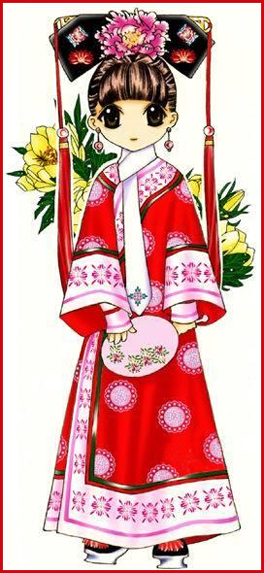| Table of Contents |
| - Abstract | 主楼 |
| - Introduction | 1L |
| - An Overview on Proverbs | 2-7L |
| - General Introduction to Proverbs | 2-4L |
| - Definition of Proverbs | 2L |
| - History of Proverbs | 3L |
| - Sources of Proverbs | 3L |
| - Characteristics shown in Proverbs | 5-7L |
| - Features from the Structural Perspective | 5L |
| - Features from the Rhetorical Perspective | 6L |
| - Features from the Cultural Perspective | 7L |
| - Domestication and Foreignization in Proverb translation | 8-12L |
| - Definition of Domestication and Foreignization | 8L |
| - Domestication in Proverb Translation | 9-10L |
| - Domestication Influenced by Culture | 9L |
| - Domestication Based on Commonness | 10L |
| - Foreignization in Proverb Translation | 11L |
| - Combination of Domestication and Foreignization | 12L |
| - Conclusion | 13L |
◇ Cultural Differences and Domestication and Foreignization in Proverb Translation ◇ 就文化差异谈归化译法与异化译法在谚语翻译中的应用 |
 |
| ●.·.●.·.●.·.●.·.●.·.●.·.●.·.●.·.●.·.●.·.●.·.●.·.●●.·.●.·.●.·.●.·.●.·.●.·.●.·.●.·. |
Abstract Proverbs are the essence and crystallizationof a nation’s language and culture. They are concise in form, rich in meaning, vivid in image and abundant in cultural information. Francis Bacon oncecommented that “The genius, wit and spirit of a nation are discovered in its proverbs”. Proverbs express so much cultural information that theirunderstanding and translation, therefore, is becoming increasingly important. This paper is aimed at a study of domestication and foreignization in proverbtranslation according to the cultural differences. Domestication and foreignization are two main translationstrategies in today’s translation field. Domestication is target language and culture oriented, while foreignization is source language and culture oriented. When the direct translation of source language is hard to understand for targettext readers, domestication needs to be employed. Every proverb has its ownunique characteristics. Domestication translation will lose the original flavorand style that are worth preserving. The purpose of translation is for culturalexchanges. With the development of information in the context of globalization, people of different nations have more opportunities to contact one another andtheir cultures. Foreignization becomes the mainstream of proverb translation.Besides, if there is still something hard or unfamiliar for readers, acombination of foreignization and domestication will be a good strategy. |
| 谚语是一个民族的语言与文化的精髓所在。谚语大部分来自各族人民对长期的生活经验的科学总结。经过长期的实践中的提炼,谚语的用词十分讲究音律和谐、寓意深刻。培根说:“一个民族的天才、机智和精神都可以在它的谚语中找到”。谚语承载了丰富的文化信息,因此对谚语的理解与翻译显得愈发重要。这篇文章是对文化差异影响下归化译法与异化译法在谚语翻译中应用的初步研究。 归化与异化是目前主要的两种翻译方法。归化是以目的语及其文化为取向的翻译方法,而异化则是相反的。当直接翻译对目的语读者来说难以理解时,需要使用归化译法。每个谚语都是独一无二的,有时归化会失去原文本来的风味与风格。翻译的目的在于文化交流。在全球化环境下,信息全面发展,各族人民互相接触的机会越来越频繁,文化交流也相对地变多,异化译法成了主流的谚语翻译方法。除此之外,如果仍然有些信息是读者不熟悉或者不能理解的,则可以把归化译法与异化译法结合起来用。 |
| ●.·.●.·.●.·.●.·.●.·.●.·.●.·.●.·.●.·.●.·.●.·.●.·.●●.·.●.·.●.·.●.·.●.·.●.·.●.·.●.·. by:西西 |
NOTE:原创帖,请勿转载。














































